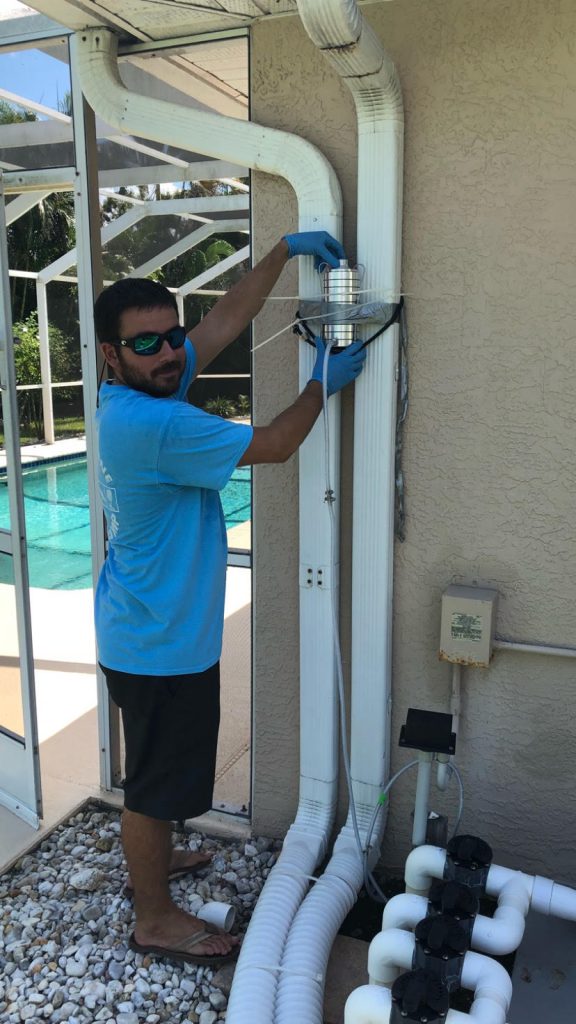
Florida Gulf Coast University graduate student Adam Catasus installs an algae air-sampling pump outside a Cape Coral home. Credit: Dr. Mike Parsons, FGCU.
NOAA’s National Centers for Coastal Ocean Science (NCCOS) provided an Event Response award of $5,000 to Florida Gulf Coast University to aid efforts to identify whether cyanobacterial (blue-green algae) blooms of Microcystis active around Cape Coral, Florida, are producing airborne toxins or particles.
For several months in 2018, intensive Microcystis blooms have plagued communities along the tidal Caloosahatchee River and adjoining canals around Cape Coral, Florida. The Florida Department of Environmental Protection (FLDEP) has been conducting monthly sampling in the area and reporting on the presence of Microcystis aeruginosa and microcystin toxin concentrations. On September 17, 2018, FLDEP measured microcystin concentrations of 46 μg L-1 (micrograms per liter). According to the World Health Organization, microcystin concentrations greater than 20 μg L-1 in recreational waters are considered “high risk” for acute health effects.
With microcystins present in coastal waters near Cape Coral communities, residents have expressed concerns about health risks from exposure to microcystins via inhalation of aerosols or particles (i.e., “algal dust”). However, there is no conclusive scientific evidence to date of an airborne vector for microcystin exposure.
To address this question, the research team developed a pilot air sampling program, and in September 2018 began collecting air filter samples from a site along the tidal Caloosahatchee River next to an ongoing Microcystis bloom, along with samples from a control site without a bloom. Air samplers were run from September 21 to October 11, 2018 and water samples were collected too, before and after deployments at each site. The goal of the program is to determine whether toxin and cell particles are present and to identify particle sizes. As particle sizes decrease they can be more deeply inhaled into the lungs, allowing any associated toxins or other bioactive compounds to more easily enter the bloodstream.
NCCOS Event Response Program funding will cover costs to analyze air samples and water samples using DNA sequencing to determine the presence or absence of Microcystis. Microcystins will be tested using an ELISA (enzyme-linked immunosorbent assay) test kit. The project is led by Dr. Michael Parsons (Florida Gulf Coast University), and involves researchers from Yale University and Cape Coral Environmental Resource Division. Results will be shared with personnel from Cape Coral, Lee County, and FLDEP. The researchers will also investigate potential expansion of the pilot monitoring program and linkages with other human health research groups.
 Official websites use .gov
A .gov website belongs to an official government organization in the United States.
Official websites use .gov
A .gov website belongs to an official government organization in the United States. Secure .gov websites use HTTPS
A lock or https:// means you’ve safely connected to the .gov website. Share sensitive information only on official, secure websites.
Secure .gov websites use HTTPS
A lock or https:// means you’ve safely connected to the .gov website. Share sensitive information only on official, secure websites.